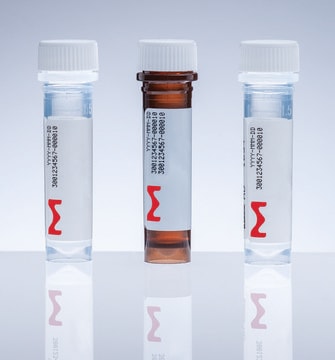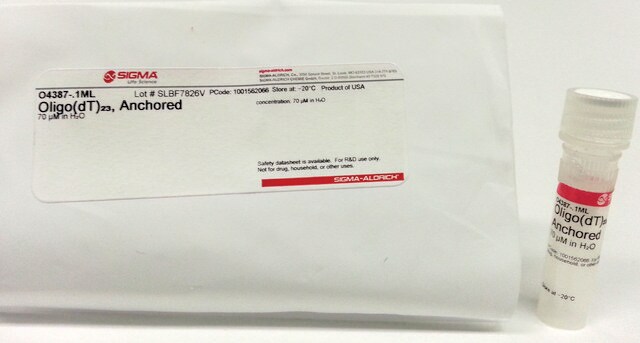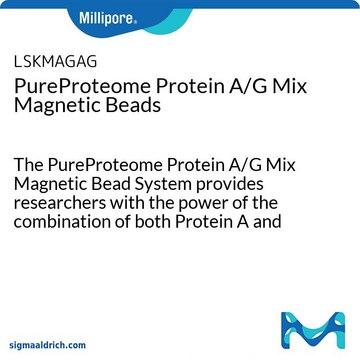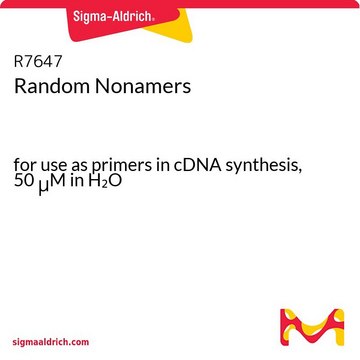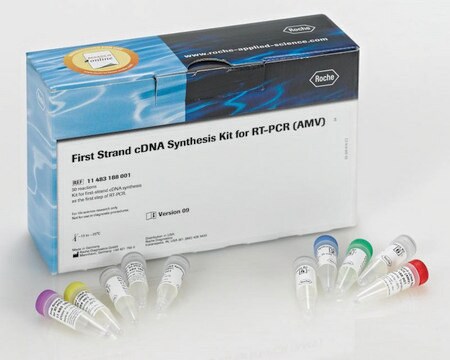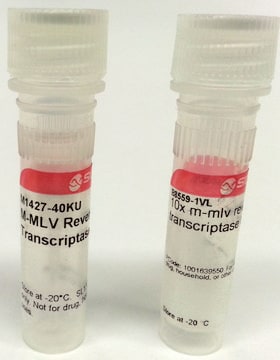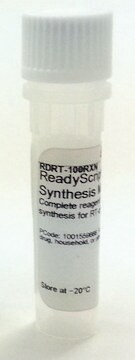11034731001
Roche
Primer "random"
lyophilized, sufficient for ≤400 reactions, pkg of 2 mg (Primer, Random pd(N)6 Potassium Salt)
Sinonimo/i:
primer
Autenticatiper visualizzare i prezzi riservati alla tua organizzazione & contrattuali
About This Item
Codice UNSPSC:
41106300
Prodotti consigliati
Stato
lyophilized
Livello qualitativo
impiego
sufficient for ≤400 reactions
Confezionamento
pkg of 2 mg (Primer, Random pd(N)6 Potassium Salt)
Produttore/marchio commerciale
Roche
Temperatura di conservazione
−20°C
Descrizione generale
p(dN)6
Applicazioni
Primer "random" has been used:
- in a reverse transcription-polymerase chain reaction (RT-PCR) and quantitative PCR (qPCR) to retro-transcribe RNA
- to reverse-transcribe RNA samples to cDNA
- in digital droplet PCR (ddPCR) to synthesis cDNA from RNA
Primer for cDNA synthesis
Caratteristiche e vantaggi
- Offers a consistent representation of all RNA sequences in mRNA
- Can prime cDNA transcription from RNAs lacking a poly(A) tail
- Short cDNA transcripts can overcome the challenges posed by RNA secondary structures
- The average length of cDNAs formed can be controlled by adjusting the ratio of random primers to RNA in the reverse transcription (RT) reaction
Altre note
For life science research only. Not for use in diagnostic procedures.
Codice della classe di stoccaggio
12 - Non Combustible Liquids
Classe di pericolosità dell'acqua (WGK)
nwg
Punto d’infiammabilità (°F)
does not flash
Punto d’infiammabilità (°C)
does not flash
Scegli una delle versioni più recenti:
Possiedi già questo prodotto?
I documenti relativi ai prodotti acquistati recentemente sono disponibili nell’Archivio dei documenti.
I clienti hanno visto anche
Amaresh C Panda et al.
Nucleic acids research, 44(5), 2393-2408 (2016-01-29)
Skeletal muscle contains long multinucleated and contractile structures known as muscle fibers, which arise from the fusion of myoblasts into multinucleated myotubes during myogenesis. The myogenic regulatory factor (MRF) MYF5 is the earliest to be expressed during myogenesis and functions
Monika Hiller et al.
PloS one, 13(10), e0204485-e0204485 (2018-10-03)
Duchenne muscular dystrophy is a lethal disease caused by lack of dystrophin. Skipping of exons adjacent to out-of-frame deletions has proven to restore dystrophin expression in Duchenne patients. Exon 51 has been the most studied target in both preclinical and
Vadim Alexandrov et al.
Nature biotechnology, 34(8), 838-844 (2016-07-05)
Rapid technological advances for the frequent monitoring of health parameters have raised the intriguing possibility that an individual's genotype could be predicted from phenotypic data alone. Here we used a machine learning approach to analyze the phenotypic effects of polymorphic
Tae-Dong Kim et al.
The Journal of clinical investigation, 126(2), 706-720 (2016-01-06)
Histone demethylase upregulation has been observed in human cancers, yet it is unknown whether this is a bystander event or a driver of tumorigenesis. We found that overexpression of lysine-specific demethylase 4A (KDM4A, also known as JMJD2A) was positively correlated
Marie Rieux et al.
Molecular psychiatry, 26(9), 5441-5463 (2020-06-10)
Huntington's disease (HD) is a monogenic neurodegenerative disorder resulting from a mutation in the huntingtin gene. This leads to the expression of the mutant huntingtin protein (mHTT) which provokes pathological changes in both the central nervous system (CNS) and periphery.
Il team dei nostri ricercatori vanta grande esperienza in tutte le aree della ricerca quali Life Science, scienza dei materiali, sintesi chimica, cromatografia, discipline analitiche, ecc..
Contatta l'Assistenza Tecnica.

